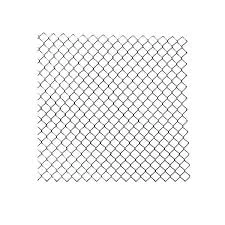The Benefits and Applications of Gabion Rock Cage Retaining Walls
Gabion rock cage retaining walls are a popular choice in civil engineering and landscaping due to their unique design, durability, and environmental benefits. Comprised of wire mesh cages filled with rocks or other materials, these retaining walls effectively manage soil erosion while blending seamlessly into natural surroundings.
What Are Gabion Rock Cage Retaining Walls?
Gabion walls are structures made from cages or baskets filled with natural stone. The word gabion comes from the Italian term gabbione, which means large cage. The wire mesh used is typically made from galvanized steel or PVC-coated wire to resist corrosion and ensure longevity. These containers can be stacked and configured to create structures of various heights and shapes, making them versatile for different applications.
Advantages of Gabion Walls
1. Erosion Control One of the primary functions of gabion walls is to prevent soil erosion. The design allows water to flow through the structure, reducing pressure build-up behind the wall and minimizing the risk of collapse. This permeability helps in maintaining the natural flow of groundwater and prevents the washing away of soil.
2. Aesthetic Appeal Gabion walls can enhance the beauty of landscapes. The natural stones used can match or complement the surrounding environment, making them an attractive option for gardens, parks, and other recreational areas. Unlike conventional concrete walls, gabions can blend harmoniously with nature, offering an earthy look.
3. Cost-Effective The materials used in gabion walls are often locally sourced stones, which can reduce overall construction costs. Additionally, the installation process requires less labor and machinery compared to traditional retaining walls, making it both a practical and economical choice.
gabion rock cage retaining wall

4. Durability Gabion structures are remarkably strong and able to withstand harsh environmental conditions. Their robust design makes them resistant to flooding, weathering, and seismic activities. When properly constructed, gabion walls can last for decades with minimal maintenance.
5. Environmental Benefits Unlike solid concrete walls that can disrupt local ecosystems, gabion walls promote biodiversity. The openings in the structure allow vegetation to grow, providing habitats for birds and small animals. They can also filter sediment and improve water quality by reducing runoff and erosion.
6. Flexibility and Versatility Gabion walls can be constructed in a variety of designs and sizes to fit specific needs, including various heights, lengths, and curve shapes. They are used in a range of applications, from soil retention in hilly terrains to decorative landscaping features.
Applications of Gabion Rock Cage Retaining Walls
Gabion walls are versatile and can be applied in numerous contexts
- Infrastructure Projects These walls are commonly used in road construction and railway embankments to stabilize slopes and prevent landslides. - Flood Control Gabions can be strategically placed in flood-prone areas to reduce water flow and protect infrastructure. - Landscaping Homeowners and landscape architects use gabion walls for terracing, garden borders, and as retaining features in gardens to create visually appealing designs. - Environmental Restoration When restoring natural landscapes, gabion structures help to manage erosion, protect ecosystems, and enhance aesthetic value.
Conclusion
Gabion rock cage retaining walls are a functional and attractive solution for managing erosion, stabilizing slopes, and enhancing landscapes. Their unique design and environmental benefits make them an increasingly popular choice among architects, engineers, and homeowners alike. Whether used for practical purposes or artistic expressions, gabion walls represent a sustainable approach to construction that respects and integrates with the natural environment. As more individuals and communities recognize the value of such structures, gabion walls will likely continue to gain traction in both urban and rural settings.
















